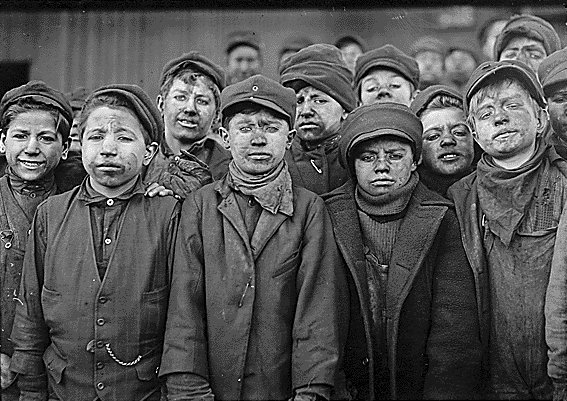In 1851, the Great Exhibition took place in London, the first in what eventually became the World’s Fairs.It was designed to highlight the modernity of British society and its industrialization and the promise of a better, more technological future for the world. Attended by over six million people over a period of six month, including many British celebrities, the exhibition housed over 13,000 exhibits, ranging from the world’s largest diamond to modern kitchen appliances. Overall, the fair was both a celebration of British nationalism; increased the popularity of the British monarchy, with the profits going to fund the Victoria and Albert Museum; while hoping to encourage international cooperation. Simply, it showcased the products of the Industrial Revolution and the rising consumer society.
The Industrial Revolution was something more than just new machines, factories, increased productivity and an increased standard of living. It was a revolution which transformed European society down to its very roots. No one was left unaffected. Everyone was touched in one way or another — peasant and noble, parent and child, artisan and captain of industry. The Industrial Revolution serves as a key to the origins of modern Western society. It was not simply a revolution in machinery and in the economic realm it altered the very structure and foundations of society.

Figure 3: The Children of the Industrial Revolution
The learning of the Scientific Revolution from the previous century was also important–especially the idea of vacuums and combustion that pushed power–and new technologies that could be used to replace human power. The new technology provided more efficient ways of producing goods on a major larger scale than previously imagined. It also encouraged the rise of factories, a place of work of many workers outside of the home, in which a power source would power the machines in which the workers would increasingly gather around. This allowed for the meteoric rise of output. -merchants found that productivity would rise if they had one location where workers would come and use technology to produce products (previously most production was done in the home ).
Candela Citations
- Crystal Palace interior. Authored by: J. McNeven. Provided by: Wikimedia Commons. Located at: https://upload.wikimedia.org/wikipedia/commons/e/eb/Crystal_Palace_interior.jpg. License: Public Domain: No Known Copyright
- Coal tub. Provided by: Wikimedia Commons. Located at: https://upload.wikimedia.org/wikipedia/commons/7/7b/Coaltub.png. License: Public Domain: No Known Copyright
- Child labour coal. Authored by: Lewis Hine. Provided by: Wikimedia Commons. Located at: https://upload.wikimedia.org/wikipedia/commons/b/b3/Childlabourcoal.jpg. License: Public Domain: No Known Copyright
